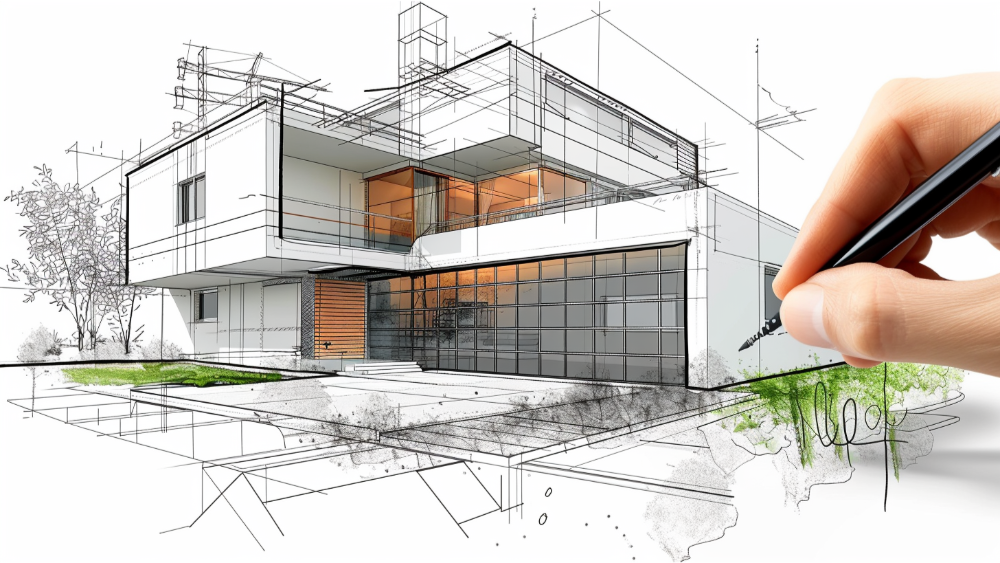
What Do Architects Do? Learn All About It Here!
Architects are professionals who plan and design buildings, landscapes, and other structures. They use a combination of technical skills, creativity, and knowledge of safety codes and regulations to create functional and aesthetically pleasing spaces.
Their responsibilities include conducting thorough research, collaborating with engineers and contractors, and utilizing computer-aided design for environmental sustainability. Architects keep up with the latest industry trends and technologies to innovate and refine their designs. They must ensure their projects meet client needs and comply with zoning laws and local building codes in their construction drawings.
Skills Required for Architects

Architects must possess a diverse set of skills to excel in their profession. These include:
Design skills
Architects must have a keen eye for design and the ability to think creatively to come up with innovative solutions for various projects. They also need strong communication skills to effectively collaborate with clients and team members.
Technical knowledge
They use specialized software and tools to create detailed drawings, blueprints, and models of their designs. They also need to have a strong understanding of engineering principles and building materials.
Project management
Architects must be able to manage multiple projects simultaneously, ensuring that deadlines are met and budgets are adhered to. This requires excellent organizational skills, effective communication with clients and contractors, a keen eye for detail, and the ability to adapt quickly to any changes or challenges that arise during the project. Additionally, they must stay updated on the latest building codes and sustainability practices to deliver innovative and compliant designs.
Communication skills
Effective communication is essential in this field as architects need to convey their ideas clearly to clients, contractors, civil engineers and other team members. They also need to listen attentively to understand the needs and preferences of their clients.
Leadership
Architects frequently collaborate in teams and must have strong leadership skills to guide and coordinate with other professionals during the design and planning stages.
Types of Architects

There are different types of architects, and their specific roles may vary based on the type of project they work on. Some common types include:
Residential Architects
These architects specialize in designing homes and small residential projects. They aim to create functional and aesthetically pleasing living spaces that reflect the unique needs and tastes of their clients. By incorporating sustainable materials, innovative design solutions, and a keen attention to detail, they strive to enhance the overall quality of life for the inhabitants. Their projects often include custom home builds, modern amenities, and thoughtful layouts to maximize space and comfort.
Commercial Architects
They specialize in planning and designing commercial buildings such as offices, shopping centers, and restaurants. Their expertise includes creating functional layouts, optimizing space usage, and incorporating the latest architectural trends to ensure both aesthetic appeal and practicality in office buildings. They also focus on sustainable design practices to minimize environmental impact and enhance energy efficiency.
Landscape Architects
They design outdoor spaces such as parks, gardens, and public areas, creating functional and aesthetically pleasing environments. Their work often involves planning pathways, selecting plant species, and incorporating features like benches, fountains, and playgrounds.
Interior Architects
These architects create interior layouts for buildings, planning the placement of walls, doors, and windows to optimize space and functionality. They also carefully select materials and finishes, considering factors such as durability, aesthetics, and sustainability, to ensure the final design is both practical and visually appealing.
Industrial Architect
Industrial architects specialize in designing and planning industrial complexes, warehouses, factories, and other large-scale facilities. They must have a strong understanding of building materials, technology, and safety codes to create efficient and cost-effective designs for these complex structures.
Restoration Architect
Restoration architects specialize in renovating and restoring historical buildings, ensuring that the original design and architectural elements are preserved while modernizing the space to meet current standards and regulations. They must have a deep understanding of architectural history and preservation techniques.
The Role of an Architect

An architect's main responsibility is to create functional, safe, and aesthetically pleasing spaces for living, working, and recreation. This entails meeting with clients to understand their needs, budgets, and project requirements, conducting site visits to assess feasibility and environmental factors, and developing initial design concepts through sketches, drawings, or computer software.
Architects collaborate with engineers and contractors to ensure structural integrity and construction feasibility, prepare detailed drawings, blueprints, and models of the final design, and oversee the construction process to ensure the project adheres to the plans.
Architectural Designers vs. Architects

While both architectural designers and architects are involved in the design process, there are key differences between their roles. An architectural designer typically works under the supervision of licensed architects and focus on creating detailed drawings and models using specialized software. They may also assist with research, client meetings, and project management tasks.
On the other hand, architects have a more comprehensive role that involves collaborating with clients to understand their needs, conducting site visits and feasibility studies, developing initial design concepts, overseeing the construction process, and ensuring compliance with building codes and sustainability practices. They also have a professional license and are responsible for signing off on final designs.
How Architects Contribute to Society
Architects play a crucial role in shaping our built environment and impacting the lives of individuals and communities. They contribute to society by: designing safe and sustainable structures that adhere to building codes and regulations; creating accessible spaces for people of all abilities, fostering inclusivity; incorporating eco-friendly elements to reduce buildings' carbon footprints; and preserving historical sites and landmarks through restoration and renovation, thereby maintaining cultural significance in home buildings, industrial, and historical buildings.
Education and Training

Becoming an architect requires a significant amount of education and training. Most architects start by obtaining a bachelor's degree in architecture, which typically takes five years to complete.
After completing their degree, they must gain practical experience through internships or apprenticeships before taking the Architect Registration Examination (ARE). This exam consists of several divisions that cover topics such as site planning, building design and construction systems, and project management.
Once they pass the exam and meet all other licensing requirements, architects can practice independently or work for architectural firms.
Job Responsibilities
Architects have diverse responsibilities that differ based on their role and the project at hand. Common duties include: Meeting with clients to discuss project needs and vision, creating detailed construction documents, plans, and 3D models using CAD software, ensuring designs comply with safety codes and regulations, collaborating with engineers and other professionals to determine structural and technical requirements, and managing construction contracts while overseeing the construction process to ensure accurate execution of the design.
Frequently Asked What Do Architects Do Questions

How long does it take to become an architect?
It typically takes around 5-7 years of education and training to become a licensed architect.
Is architecture a lucrative career?
Yes, architects have the potential to earn a high salary, especially as they gain experience and specialize in specific areas.
Do architects need to be good at math?
While a strong understanding of mathematical concepts is beneficial in architecture, it is not a prerequisite. Architects primarily rely on computer software and other tools to perform calculations.
Can architects work from home?
It is possible for architects to work remotely, but they may also need to visit construction sites and meet with clients in person.
How important is sustainability in architecture?
Sustainability is becoming increasingly critical in architecture as the desire for eco-friendly buildings rises. Architects play a crucial role in incorporating sustainable elements into their designs to minimize the impact on the environment.
What is the main role of an architect?
The main role of an architect is to design buildings and structures that are functional, safe, and aesthetically pleasing. They must thoroughly understand the client's needs, ensure compliance with building codes and regulations, and oversee the construction process to bring the design to life while coordinating with various professionals.
Conclusion

In conclusion, architecture is a dynamic and challenging field that requires a combination of technical skills, creativity, and strong communication abilities. Architects have the opportunity to make a positive impact on society by designing functional and sustainable structures that enhance people's lives.
As the demand for new buildings and construction projects continue to increase, the role of architects will continue to be vital in shaping our built environment. So, in addition to possessing technical knowledge and skills, architects must also be adaptable and open to learning new techniques and trends to stay relevant in this constantly evolving field. Whether designing a modest residential home or a grand commercial complex, the role of an architect is crucial in creating spaces that not only fulfill their intended purpose but also contribute positively to society. Aspiring architects must be willing to put in the time and effort required to obtain their license, but the rewards of this fulfilling profession make it all worthwhile.




